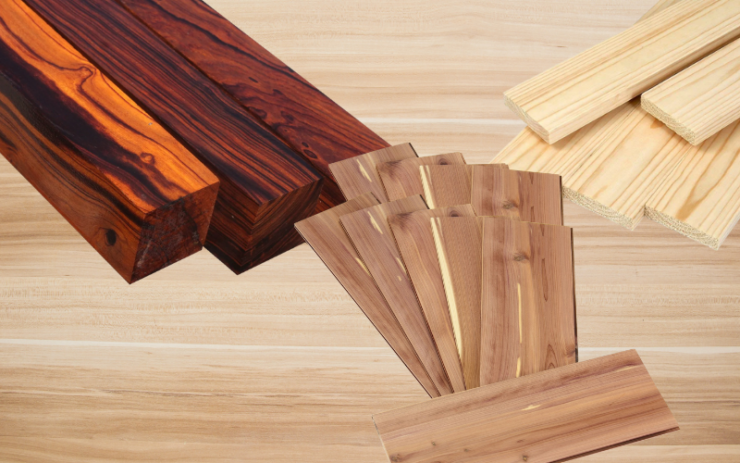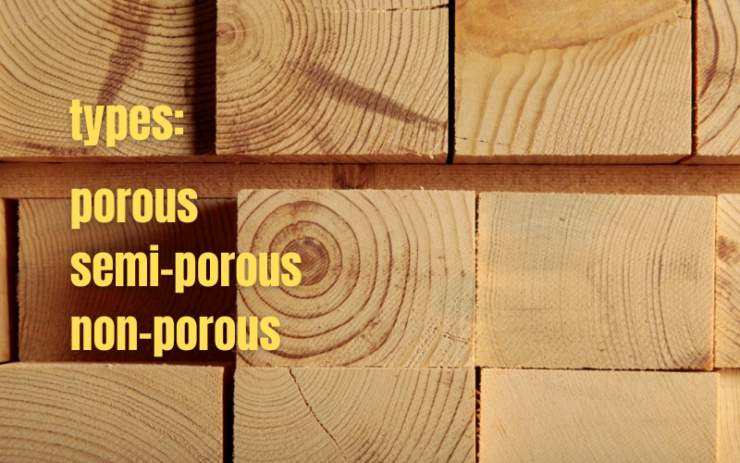If you’re curious about how porous or non-porous certain wood types are, you came to the right place. We’re here to explain all there is to know about wood porousness and walk you through several examples. That will help you understand the matter more clearly and know exactly what type of wood to get or not get if need be.
Now, the first thing you’re probably interested in is whether all wood is porous. The answer to that is both yes and no. This may seem confusing, but we’ll lay it out in layman’s terms so that you understand everything perfectly.
Most wood types are porous to a certain extent, and there is no wood type that is 100% non-porous. What that means is that you probably won’t be able to find a wood type that doesn’t have any pore that allows moisture and air to flow through.
These qualities, these pores, are what make the wood porous. With that being said, some would say there is no non-porous wood. However, there are certain wood types that don’t have that many pores and vessels, and those types are considered non-porous or semi-porous wood types.
Understanding What Type of Wood Is Non-Porous

As we previously mentioned, most wood types have enough pores and vessels through which air and moisture are free to pass, which makes them porous.
Although that is true, there are also several wood types that have fewer pores and vessels and are regarded as either semi- or non-porous. These semi-porous and non-porous wood types include pine, redwood, cedar, ironwood, and ebony. In fact, most softwoods are considered non-porous, to a different extent.
If you’re wondering what happens to wood that is 100% non-porous, we’re here to explain. The reason why we say that completely non-porous wood doesn’t exist is that wood that doesn’t have any pores where air can come through will die. Wood needs to breathe, so if it doesn’t get the necessary air and water, it won’t be able to stay alive.
Is Plywood Porous?
If you want to get plywood for a certain task that requires your wood to either be or not be porous, and you’re not sure whether plywood is porous or not, don’t fret. You’re probably not sure which route to go, considering there is no shortage of options to choose from, but we’re here to help.
Plywood is a type of wood that is considered porous. Although it is manufactured using wood veneers and glue to piece it together, it still has properties that make it porous and susceptible to damage if you expose it to water for long periods of time.
The wood veneers used in crafting plywood are indeed relatively thin, and the glue typically used to piece the wood together can make it water-resistant to some extent. However, this does not guarantee that using plywood when you need non-porous wood is a good choice. On the contrary, there are several other excellent options you can go for when you’re in this type of situation.
For example, using particle boards instead of plywood can prove quite convenient. The materials used for particle boards and the surface are made in a way that is less likely to absorb liquids, which makes using particle boards instead of plywood a safer option.
In case particle boards aren’t your cup of tea and you want to search for more options, painted wood or laminates can also prove super convenient. They aren’t porous and won’t absorb any liquids, so you can check them out instead of plywood whenever you need to.
Read also: Chipboard VS Plywood
Rough-Cut Wood Vs. Smooth-Cut Wood – Which Is More Porous?
The last thing you might want to consider when choosing the best wood type is whether you should get a rough-cut or smooth-cut wood type. There are certain differences that are very important when it comes to these two types of wood, and you should pay close attention to them before you make your ultimate decision.
Rough-cut wood is wood you cut using a saw or another tool without sanding it smoothly beforehand. It is typically a lot more textured and has a more rustic appearance than smooth-cut wood. When it comes to porousness, you should note that rough-cut wood is typically a lot more porous than smooth-cut one.
The reason behind this is that woodcut with a saw or other tools is usually filled with tiny holes, voids, and crevices that allow the air, moisture, and other gasses to pass through with ease. That is why you should always opt for smooth-cut wood if you’re in search of a non-porous or semi-porous wood type.
Conclusion

While differentiating between porous, semi-porous, and non-porous wood types may seem like a difficult task, it doesn’t have to be. Once you gather all the necessary information and learn the key differences between these wood types, you’ll realize that finding the perfect wood type for what you need can feel like a breeze.
However, it is very important to learn which wood is porous and which is not before you go and get it. If you get porous wood for something that requires non-porous wood, there will be a number of issues and inconveniences you’ll have to go through. What’s worse, you’ll probably have to take the first wood you got and replace it with the non-porous type.
So, to avoid all this hassle and have a smooth-sailing experience, we recommend you pay attention to the wood types we mentioned in this article and double-check whether the wood you want to get is porous or non-porous. That way, you won’t have any issues using it in the exact way you planned to, and you can avoid wasting time and money replacing it and doing certain tasks all over again.
Luckily, we summarized all the essential info for you so that you don’t have to spend hours or days doing research on your own. You can sit back, relax, and learn all there is to know in less than 15 minutes!

